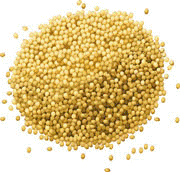International Sorghum and Millet Collaborative Research Support Program (INTSORMIL CRSP)

INTSORMIL Impacts and Bulletins
Date of this Version
11-12-2008
Document Type
Article
Citation
INTSORMIL Impact (November 12, 2008)
Abstract
INTSORMIL has supported sorghum research and technology transfer activities in Central America since 1981. Emphasis has been on El Salvador and Nicaragua but now the program is expanding to other Central American countries. Statistics provided by the Ministry of Agriculture indicate a significant advance in sorghum production in El Salvador. As shown in the graph below surface area in ha sown to sorghum during the period 1999-2009 did not increase (about 105,000 ha). However, during that same period grain production increased from 140,000 MT to 186,000 MT, an increase of 33%. This is due to the dramatic yield increase per ha of 46% (603 kg/ha at an increase rate of 67 kg/year ). The yield increase is attributed to the INTSORMIL support of the CENTA (Centro Nacional de Tecnologia Agropecuaria y Forestal) sorghum varietal improvement program. Similar production increases have occurred in other Central American countries where INTSORMIL supports national programs.
Most sorghum in Central America is produced by resource-poor smallholder farmers. Much of the grain is used for human consumption and replaces a portion of the expensive imported maize used in preparing ‘tortillas.’ The collaborative INTSORMIL-CENTA program focuses on the breeding of improved high yielding varieties with good food, feed and forage quality. This strategy is supported by the development of improved agronomic practices and the transfer of this technology package to the small-holder farmers. Through promotion of this strategy, El Salvador and other Central American nations have significantly increased the profitability of sorghum production. This has allowed these countries to minimize imports of costly maize and has significantly improved the nutritional and economic status of many small-holder farmers.

